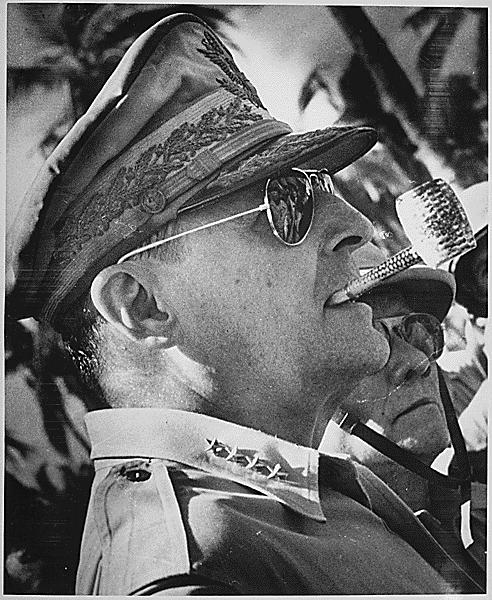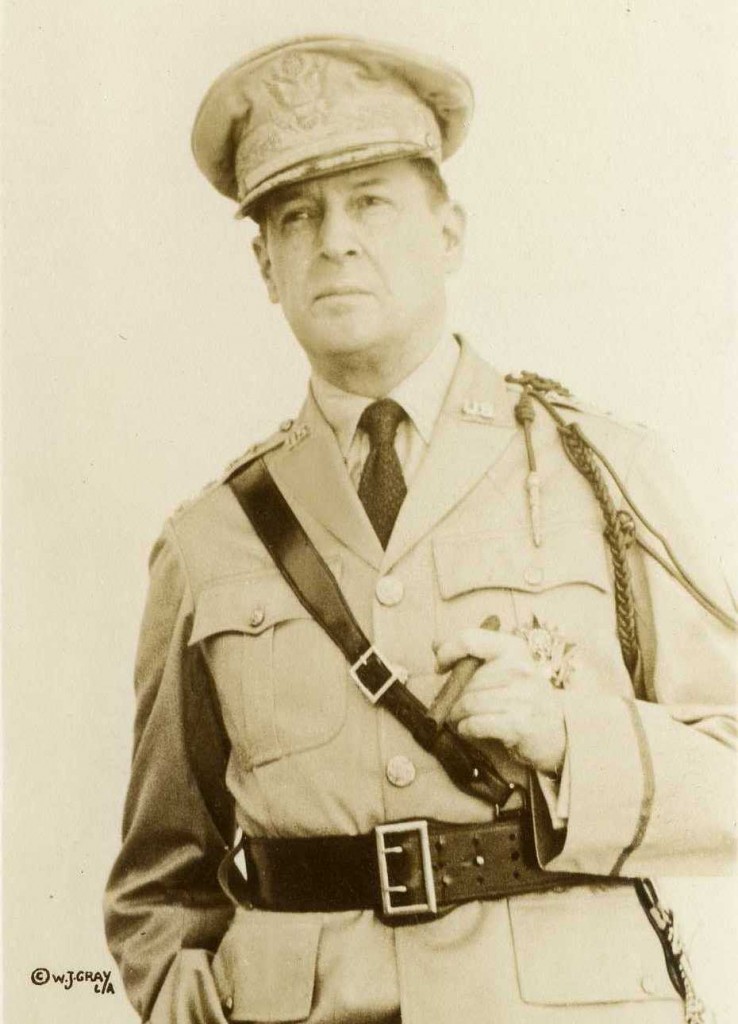Posts Tagged ‘MacArthur’



Remember when MacArthur was ordered to evacuate the Philippines last month? Well, today, 70 years ago, he actually did. Under the cover of night, MacArthur, along with his family and staff were transported from the Philippine Islands by PT boat, then plane, and then train. Though his “I shall return” catchphrase originated from a speech he made in the small railroad town of Terowie in southern Australia, he repeated the speech many times over. Supposedly, leadership in the States had asked that he change the “I” to “We,” but MacArthur ignored the request. In April, he would assume the post of Supreme Commander of Allied Forces in the Southwest Pacific Area and continue the fight for the Pacific from there. He fulfilled his promise to return to the Philippines in late 1944 and became a hero to Filipinos who had been living under ruthless Japanese occupation for years.
This post by Curator Meg Roussel




Postcard featuring MacArthur. Gift of Gordon McWilliams, The National WWII Museum Inc., 2011.376
On this day 70 years ago, President Roosevelt as Commander-in-Chief ordered Gen. Douglas MacArthur to leave the Philippines as the islands’ defenses fell and Allied forces continued to retreat toward Bataan. Retreat, in fact, was the original plan of “defense” in the Philippines. When the Japanese attacked the Philippine Islands shortly after Pearl Harbor, the then-current War Plan (Rainbow Five) plan was not to fight, but to retreat immediately to Bataan to await better equipment and additional troops. MacArthur, however, believed Allied forces in the Philippines were stronger than the attacking Japanese, and rolled the dice by taking them head on. As the tide in the Philippines turned repeatedly for the worse, and as more and more territory in the south Pacific was lost to the Japanese, Roosevelt felt the urgent need to remove MacArthur from the Philippines.
(more…)



Falling Back to Bataan, January 1942
The mighty resistance put up by American and Filipino forces following the initial December 8th attacks was a surprise to Japanese military leadership. They expected the Philippines to be taken in just a few weeks.
After underestimating Allied resistance once, the Japanese leadership did it again when in early January 1942 they made the decision to pull out an entire division of its elite troops to be sent elsewhere. The use of air power was also cut back, as it was believed that the campaign was essentially over, and that the Philippines had been won for Japan.
This second underestimation of American and Filipino determination allowed for continued combat. Had those crack troops not been transferred elsewhere, the fighting in the Philippines would most likely have ended much sooner than it did, and freed up thousands more Japanese troops to push towards expansion elsewhere. Instead, combat would continue in the southward direction of the Bataan Peninsula where General MacArthur hoped for reinforcements that would never come. Between the end of January and the beginning of February, additional landings by Japanese troops were somewhat disrupted by what remained of the Far East Air Force’s P-40 Warhawks.
While American and Filipino forces continued to retreat southward, the mere fact that they were still fighting at all, when Pearl had been so badly damaged and Wake and Guam taken relatively easily, was an opportunity for positive American propaganda.
(more…)






